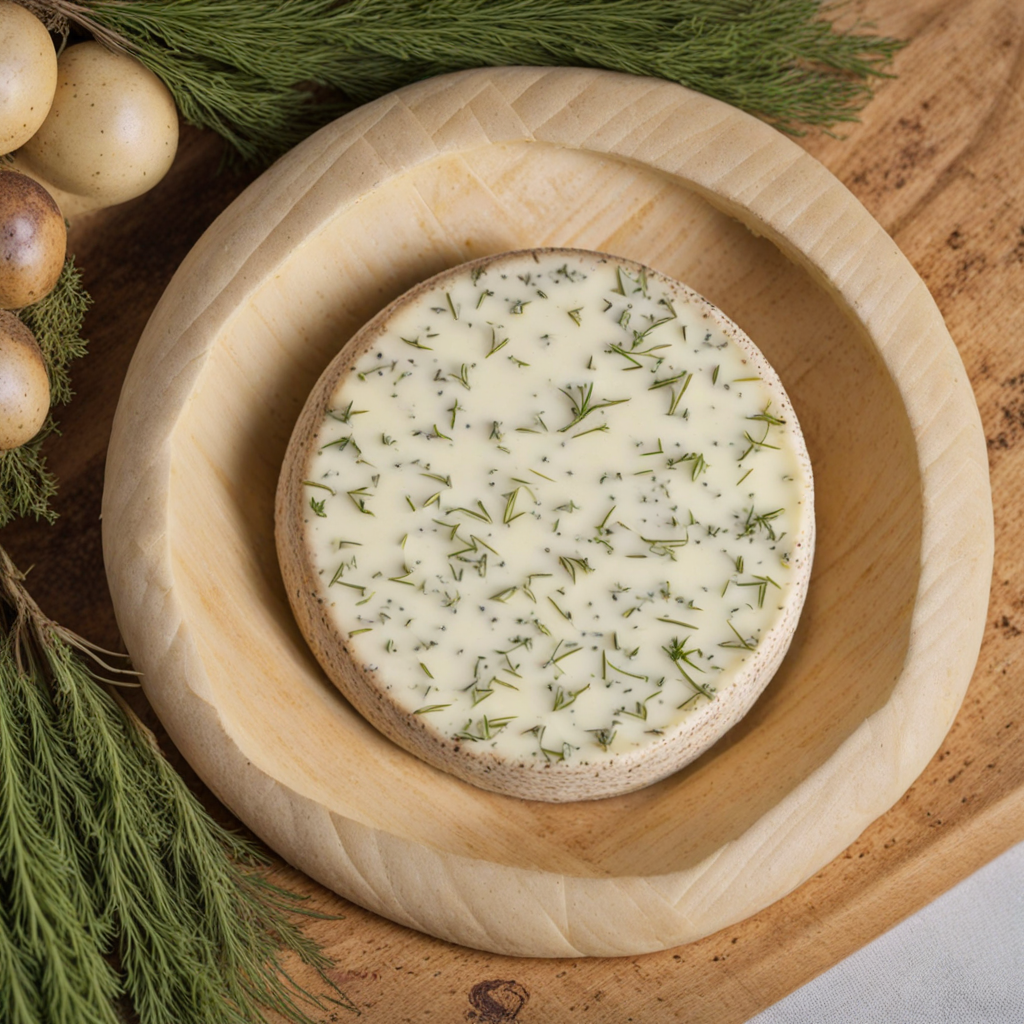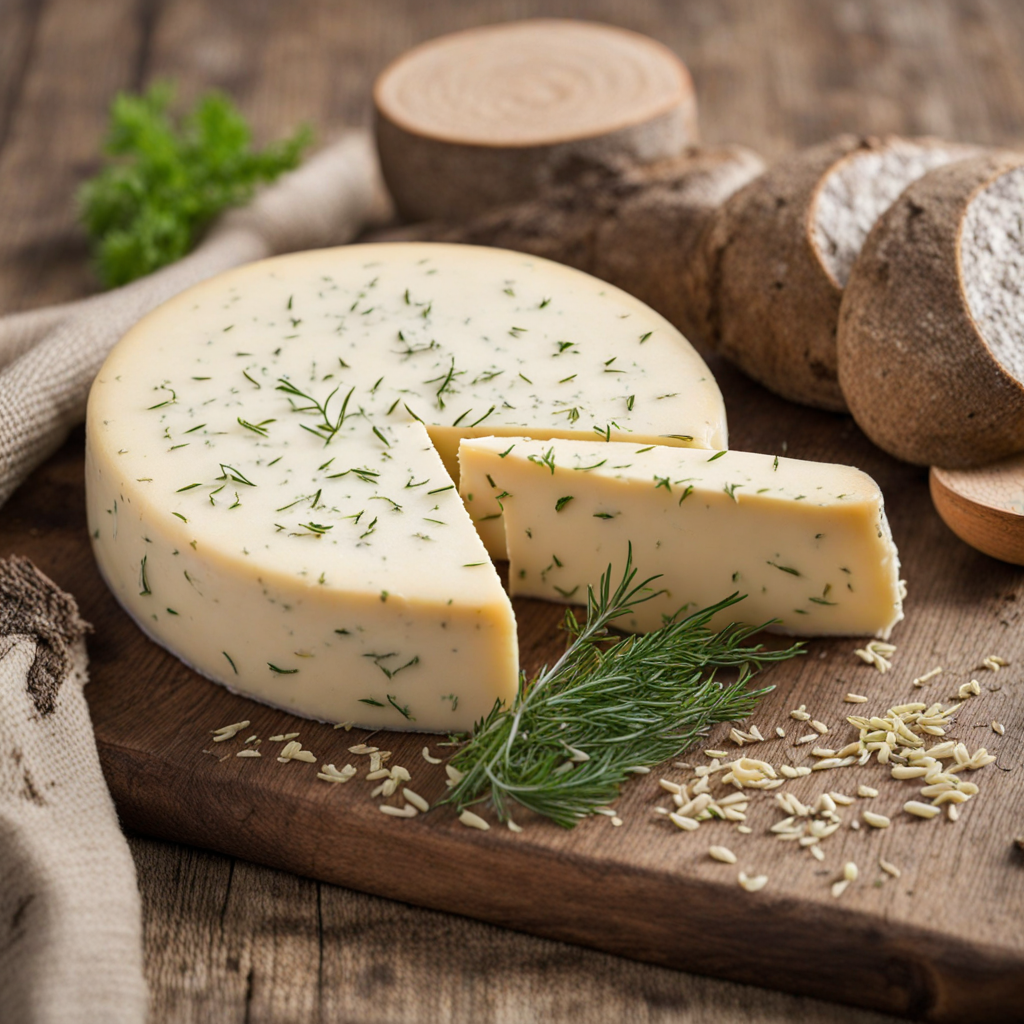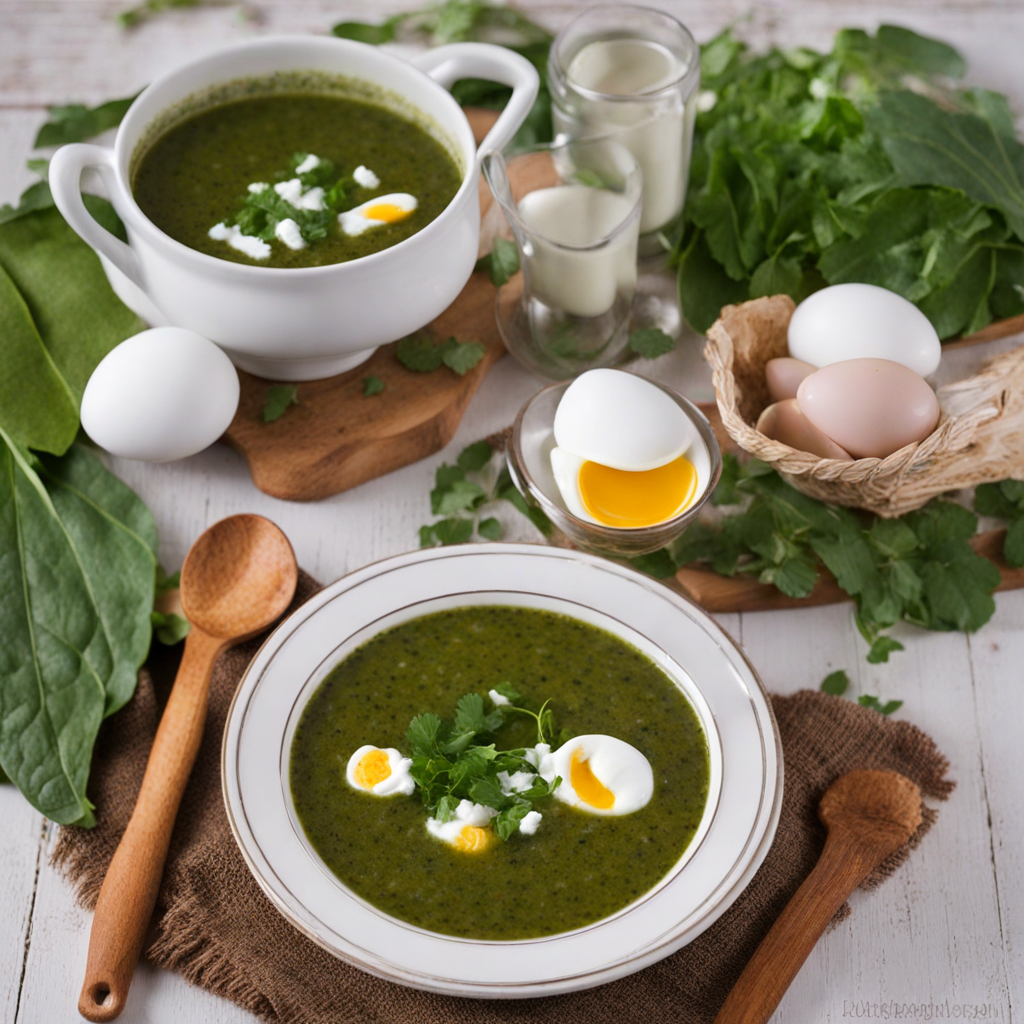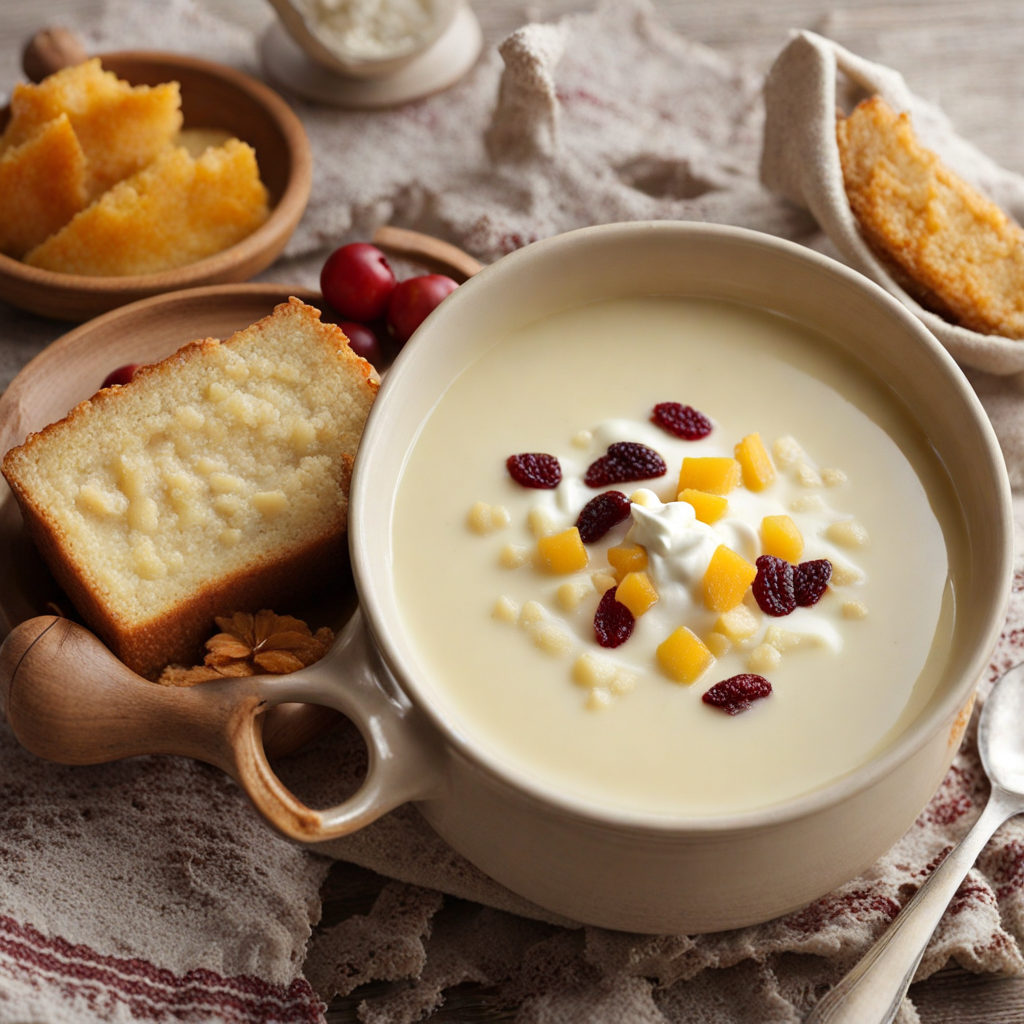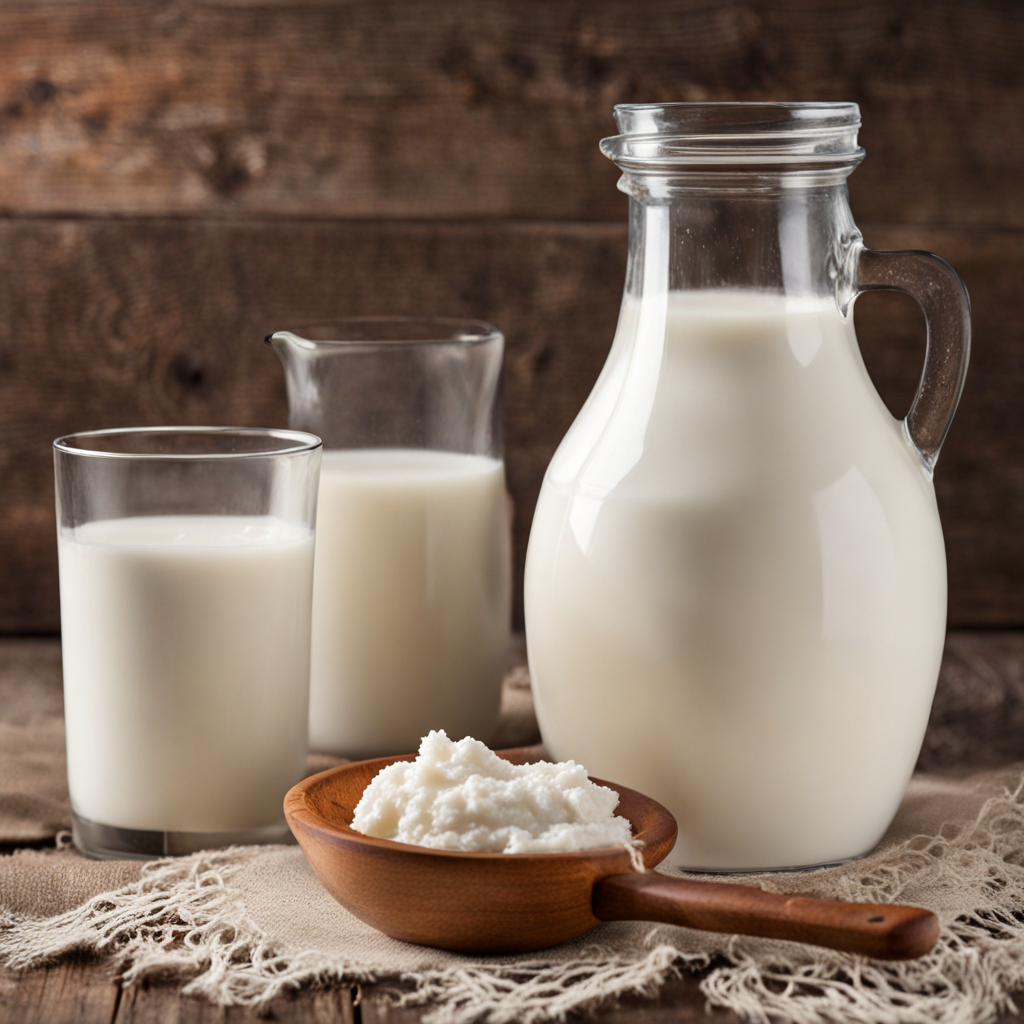Jāņi Cheese
Jāņu siers, a traditional Latvian cheese, holds a special place in the hearts and kitchens of Latvia, particularly during the celebration of Jāņi, the summer solstice festival. This festive cheese is not merely a culinary delight; it is a symbol of cultural heritage and communal joy. The history of Jāņu siers is deeply intertwined with Latvian folklore and rural traditions. It is often made and consumed during the Jāņi festival, which marks the longest day of the year, celebrating the arrival of summer. The cheese embodies the spirit of the festivities, representing unity, abundance, and the connection between people and nature. The preparation of Jāņu siers is a time-honored process that reflects the artisanal methods passed down through generations. Traditionally, it is made from cow's milk, although goat’s or sheep’s milk can also be used. The milk is heated, and rennet is added to curdle it, forming curds and whey. Once the curds have formed, they are cut into small pieces to facilitate whey drainage. The curds are then gently cooked and stirred, allowing them to release more moisture and develop a firmer texture. After cooking, the curds are drained, pressed into molds, and sometimes infused with flavors or spices, such as caraway seeds, which is a common addition that enhances the cheese's unique profile. The cheese is typically left to mature for a short period, during which it develops its characteristic
How It Became This Dish
Origin of Jāņu siers Jāņu siers, or Midsummer cheese, is a traditional Latvian cheese that holds a special place in the hearts of the Latvian people. Its origins can be traced back to ancient agricultural practices, rooted in the celebration of the summer solstice, known as Jāņi. This festival, celebrated on the night of June 23rd, marks the peak of the summer season and is a time when Latvians honor the sun, fertility, and the abundance of nature. The cheese itself is a symbol of the harvest and the connection between the people and their land. Traditionally, Jāņu siers is made from curdled milk, typically from cows, goats, or sheep, and is often flavored with caraway seeds. The process of making this cheese involves heating milk, adding rennet to curdle it, and then pressing the curds into round shapes. The cheese is usually molded into a round shape with a distinctive cross pattern on top, which is said to symbolize the sun. The use of caraway seeds not only adds a unique flavor but also carries a deeper meaning, as the seeds are associated with protection against evil spirits, making the cheese an integral part of the festivities. \n Cultural Significance Jāņu siers is more than just a culinary delight; it is a cultural icon that embodies the spirit of Latvian identity. During the Jāņi festival, families gather to celebrate with traditional foods, songs, and dances. The cheese is often served alongside dark rye bread, fresh vegetables, and local beer, creating a feast that reflects the richness of Latvian agriculture. In folklore, Jāņu siers is believed to possess magical properties. It is often said that the cheese should be made with love and care, as the quality and taste are thought to reflect the emotions of the maker. The cheese is also an offering to the spirits of nature, acknowledging the connection between the living and the supernatural. This reverence for the natural world is a recurring theme in Latvian culture, and Jāņu siers serves as a delicious reminder of this bond. \n Development Over Time Over the centuries, Jāņu siers has evolved, yet it has remained a cherished staple of Latvian cuisine. In the early stages, cheese-making was a household task, with families passing down recipes and techniques through generations. The traditional method of preparation remains largely unchanged, with many families still using their time-honored recipes. The industrialization of farming in the 20th century brought changes to the production of dairy products, including Jāņu siers. While some local farms began to adopt modern techniques and machinery, many artisans and small-scale producers continued to honor the traditional methods. This has led to a revival of interest in artisanal cheese-making, with a growing number of local dairies focusing on quality and authenticity. Today, Jāņu siers is not only enjoyed during the summer solstice but is also available year-round in markets and specialty stores. Its reputation has spread beyond Latvia's borders, with food enthusiasts and chefs around the world seeking out this unique cheese for its rich flavor and cultural significance. \n Modern Interpretations In contemporary cuisine, Jāņu siers has inspired a variety of interpretations, both within Latvia and internationally. Chefs have started to incorporate the cheese into a range of dishes, blending traditional flavors with modern culinary techniques. For example, Jāņu siers can be found in salads, on cheese boards, or even as a topping for gourmet pizzas, showcasing its versatility. Moreover, the cheese has become a symbol of the Latvian food movement, which emphasizes local products and sustainable practices. As consumers become more interested in the origins of their food, Jāņu siers has emerged as a prime example of a product that reflects the values of locality, tradition, and quality. This shift has led to an increased appreciation for the craftsmanship involved in traditional cheese-making and a renewed interest in preserving culinary heritage. \n Conclusion Jāņu siers is not just a delicious cheese; it is a testament to Latvia's rich cultural heritage and the enduring connections between food, tradition, and identity. As the cheese continues to evolve, it remains a cherished part of the Latvian Midsummer celebration, symbolizing the spirit of community, abundance, and the magic of nature. The ongoing popularity of Jāņu siers highlights the importance of preserving culinary traditions in a rapidly changing world. With its unique flavor and cultural significance, it serves as a delicious reminder of the bonds between people, their land, and their history. As Latvians continue to celebrate Jāņi with this beloved cheese, they honor not only their past but also the future of their culinary identity.
You may like
Discover local flavors from Latvia


